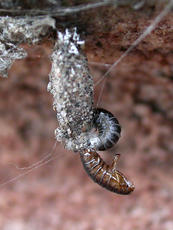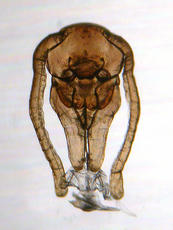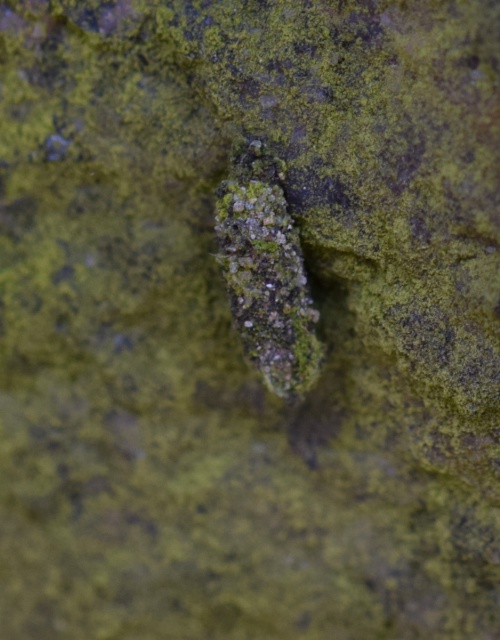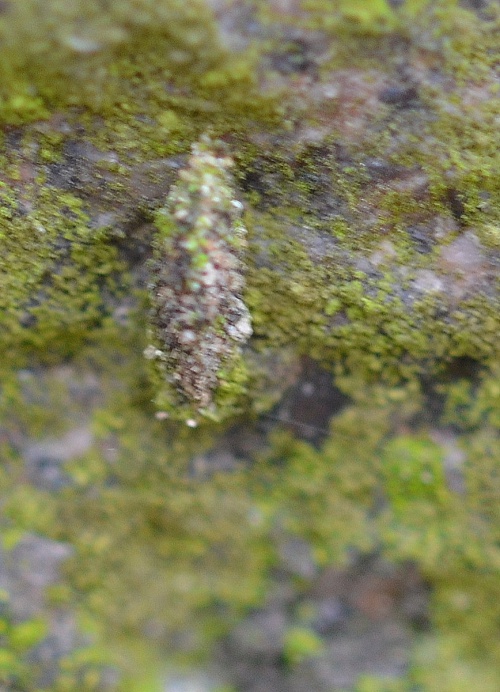Lichen Case-bearer - Dahlica lichenella
Only the wingless females and larvae have been recorded in Britain. Positive identification depends on dissection of the genitalia, or examination of the head plate of the pupal exuviae. Specimens should be taken sparingly as excessive collecting could cause localised eradication of this species with limited dispersal ability. Apparently vacated cases with extruded pupal exuviae may contain over 50 ova.
Check for the larva which are more likely to be found than the adults (see life history)
Wingless females emerge in March or April.
The adult lives a very short time, so the cased larva is more likely to be found on sunny rocks, stone walls, wooden posts and tree trunks. The case, triangular in cross section and tapered at both ends, is covered in granules of sand, lichen and/or algae. The larva grows from 1 mm on hatching in May to about 5 mm in late September, overwintering full grown until the following February. The larva pupates in the case, and in March or April the pupa extrudes from the case for the wingless female to emerge and lay her eggs in the vacated case.
Winged males of Dahlica lichenella occur in Europe but only the wingless females have been recorded in Britain; in a few places in southern England, Cheshire, southern Scotland and Perthshire, but the species may have been under-recorded because of identification problems, and males might yet be found. In the Butterfly Conservation’s Microlepidoptera Report 2011 this species was classified as Nationally Scarce A.
It appears to be uncommon in Leicestershire and Rutland, where there are few records. L&R Moth Group status = D (rare or rarely recorded).
Leicestershire & Rutland Map
Enter a town or village to see local records
MAP KEY:
Yellow squares = NBN records (all known data)
Coloured circles = NatureSpot records: 2025+ | 2020-2024 | pre-2020
UK Map
Species profile
- Common names
- Lichen Case-bearer
- Species group:
- Moths
- Kingdom:
- Animalia
- Order:
- Lepidoptera
- Family:
- Psychidae
- Records on NatureSpot:
- 3
- First record:
- 22/04/2005 (Skevington, Mark)
- Last record:
- 21/01/2019 (Mathers, Steve)
Total records by month
% of records within its species group
10km squares with records
The latest images and records displayed below include those awaiting verification checks so we cannot guarantee that every identification is correct. Once accepted, the record displays a green tick.
In the Latest Records section, click on the header to sort A-Z, and again to sort Z-A. Use the header boxes to filter the list.





